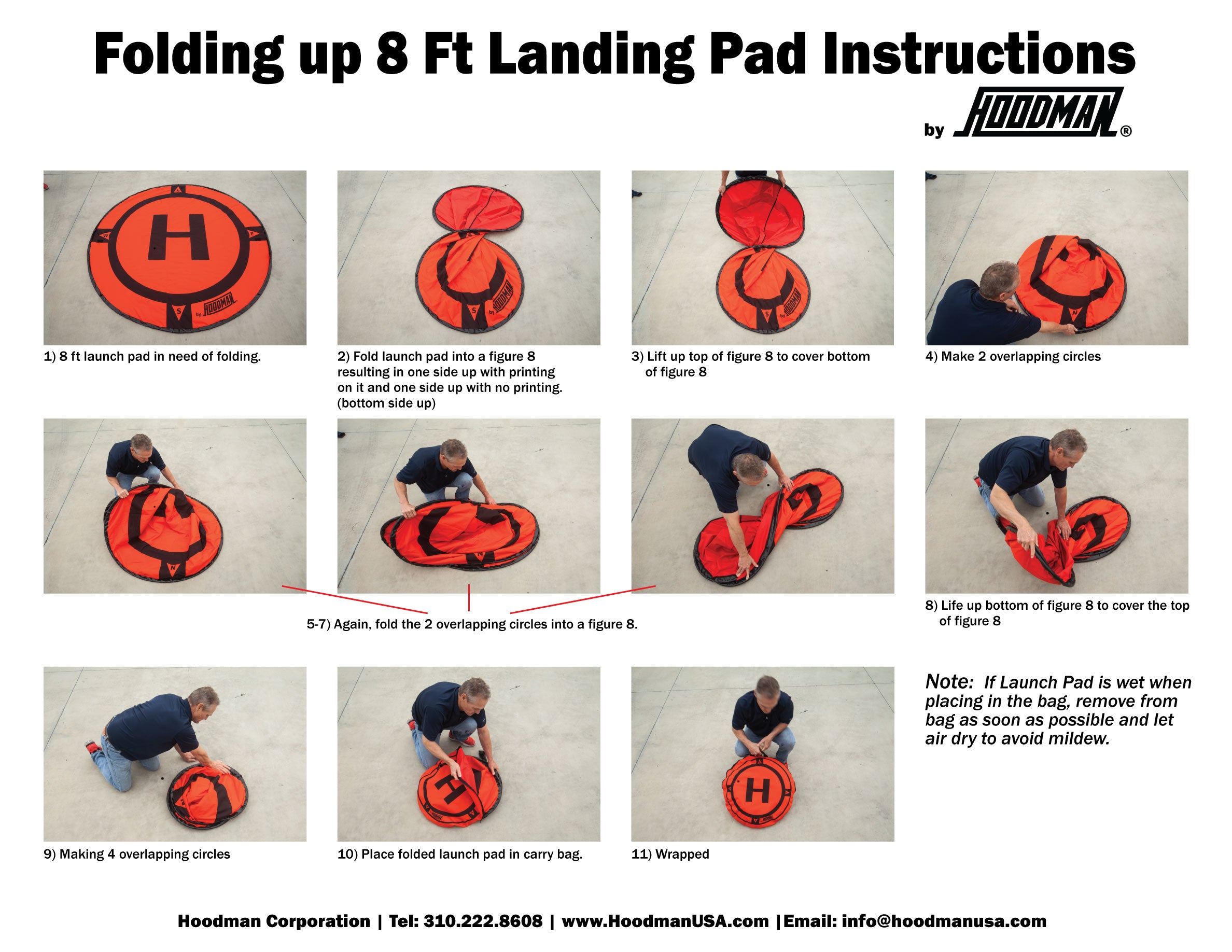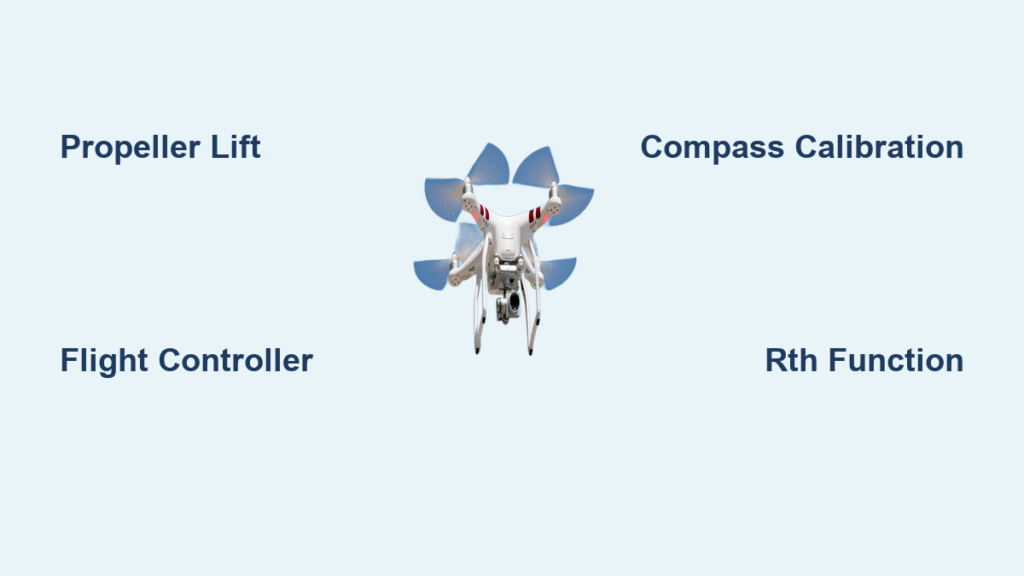Landing your drone safely starts with using a quality landing pad, but packing it up shouldn’t take longer than your flight. If you’ve ever struggled with a stubborn landing pad that fights your folding attempts, you’re not alone. Mastering how to fold a drone landing pad properly saves valuable time in the field, prevents equipment damage, and makes transportation infinitely easier. This guide breaks down the exact steps for every major landing pad type, turning frustrating 15-minute struggles into smooth 4-second folds that impress fellow drone enthusiasts.
Most drone pilots learn the hard way that not all landing pads fold the same way. Rigid frame models like the Hoodman series demand precise geometric folding, while flexible hoop designs require a counterintuitive twist technique that feels unnatural at first. Understanding these differences is the key to mastering how to fold a drone landing pad regardless of what you own. Whether you’re heading to your local park or traveling internationally with your drone gear, these techniques will become second nature with practice.
Rigid Frame Landing Pads Fold Flat

Rigid frame pads like the Hoodman LP series require precise rectangular folding to maintain their structural integrity. These durable pads combine fabric surfaces with rigid structural supports that create crisp, clean folds when done correctly. Knowing how to fold a drone landing pad of this type properly prevents material strain and extends its lifespan significantly.
Hoodman LP21 Quick Fold Sequence
Lay your landing pad completely flat on a clean, dry surface, ensuring no debris remains underneath that could create uneven folds. Bring the top edge down to meet the perfect bottom edge, creating a precise half-fold with no wrinkles. Fold the bottom edge up over the top, aligning the edges with military precision—this alignment is critical for subsequent folds. Press firmly along the fold lines with your palms to establish sharp creases that will guide further folding.
Fold in half again to create a compact square that fits neatly into its storage bag. Secure with elastic straps immediately to prevent unfolding, or slide it directly into the provided storage bag while the creases are fresh. The entire process should take less than 15 seconds once you’ve mastered how to fold a drone landing pad of this type.
2-5 Ft Models Need Extra Care
Larger rigid pads follow similar principles but demand greater attention to symmetry to avoid material strain across the expanded surface area. Position your fully extended pad on a completely flat surface, taking time to smooth out every wrinkle before beginning. Fold the left side toward the center with careful edge alignment—don’t rush this step, as misalignment compounds with each subsequent fold.
Fold the right side over the left, creating a narrow double-layered strip with perfect seam alignment. Fold this strip in half lengthwise, ensuring the edges match precisely to prevent bunching. Complete the fold by bringing the ends together for a compact rectangular shape. Secure immediately with straps or in the storage bag before the pad attempts to spring back.
5 Ft models particularly benefit from an extra folding repetition to achieve optimal compactness without stressing the material. Take 10 extra seconds to ensure perfect symmetry—this small investment prevents premature wear at the fold points.
Flexible Hoop Pads Use Twist Method
Flexible hoop landing pads employ the same spring-loaded mechanism as photography reflectors, requiring a specific twist-and-collapse technique that feels counterintuitive at first. Mastering how to fold a drone landing pad with this design separates novice pilots from those who look like professionals at the flying field.
Master the Twist Technique
Hold your pad vertically at chest height with both hands firmly positioned on the metal rim. Place your left hand at 9 o’clock with thumb facing upward while positioning your right hand at 3 o’clock. Rotate your right hand 180 degrees so your thumb now faces downward while keeping your left hand completely steady—this wrist orientation is crucial.
Apply firm, opposing rotational forces simultaneously, like you’re wringing out a wet towel. Don’t hesitate—confident, decisive movement makes the pad collapse naturally rather than fighting you. Let the mechanism do the work as the pad shrinks to half its original diameter in seconds. Slide it smoothly into the circular carrying bag before it attempts to spring back open.
Pro Tips for Smooth Folds
Practice the motion without the pad first to understand the precise wrist movement required—this builds muscle memory before you risk damaging your equipment. Watch experienced users whenever possible, as visual learning accelerates skill acquisition for this non-intuitive technique. Expect 15-20 minutes of initial practice before your first successful fold—this is completely normal.
Television crews notoriously use similar devices as intern “tests” due to the technique’s counterintuitive nature. College lighting courses incorporate reflector folding as fundamental learning exercises, proving this skill transfers across multiple industries. Once you master how to fold a drone landing pad with a hoop design, you’ll find yourself effortlessly collapsing car windshield shades and photography reflectors too.
Common Folding Mistakes to Avoid

Most users apply insufficient force during the twist motion, resulting in partial collapses that require multiple attempts. The breakthrough moment comes suddenly after what feels like endless failures—like learning to ride a bike, it transitions from impossible to automatic. Experiment with different pressure levels during the twist motion to find the sweet spot for your specific pad.
Safety note: Stiff metal components can cause injury if seams break during improper folding, so maintain firm but controlled movements. Never force a rigid pad into unnatural folds—that’s the fastest way to damage structural supports. Always ensure complete dryness before folding to prevent mildew formation that compromises fabric integrity.
Storage Best Practices for Longevity
Store your folded landing pad in cool, dry locations away from direct sunlight to prevent moisture damage and material degradation. Check regularly for fabric tears or metal fatigue at fold points—early detection prevents small issues from becoming major failures. Avoid extreme temperature fluctuations that could warp metal components over time.
Replace immediately when you notice visible metal seam separation or fabric tearing at stress points—continuing to use a compromised pad risks sudden failure during your next flight. Keep your storage bag clean and free of debris that could transfer to your pad during transport.
Speed Up Your Folding Skills

Beginner phase requires 10-15 minutes per attempt as you work through the learning curve. Competency phase arrives after 5-10 successful repetitions, bringing your time down to 30-60 seconds. Expert phase means consistently folding your drone landing pad in 3-4 seconds with minimal thought.
Real-world insight: Professional drone operators develop such muscle memory that they can fold their pads while watching their drone land, ensuring immediate readiness for transport. Daily practice for one week builds the neural pathways needed for automatic performance—set aside two minutes each day for folding practice.
Quick Reference Comparison
| Pad Type | Expert Fold Time | Storage Shape | Key Challenge |
|---|---|---|---|
| Hoodman LP21 | 4 seconds | Square | Edge alignment |
| 2-3 Ft Rigid | 6 seconds | Rectangle | Symmetry maintenance |
| 5 Ft Rigid | 8 seconds | Rectangle | Material strain |
| Hoop 80cm | 3 seconds | Circle | Twist technique |
Next Steps for Folding Mastery
Practice the folding motion daily for one week to build permanent muscle memory—consistency beats marathon practice sessions. Watch video tutorials that demonstrate the techniques from multiple angles to reinforce visual learning. Teach someone else the proper method—explaining the process solidifies your understanding and reveals gaps in your knowledge.
Keep practicing even after mastery—the most skilled drone pilots maintain their folding technique through regular repetition. Remember that initial frustration is universal across all skill levels. Your first successful fold often generates what professionals describe as “frenetic applause” from observers—a testament to how challenging yet impressive this simple skill appears to those who haven’t mastered how to fold a drone landing pad. With these techniques in your toolkit, you’ll transform what was once a chore into a satisfying ritual that completes every successful drone flight.



